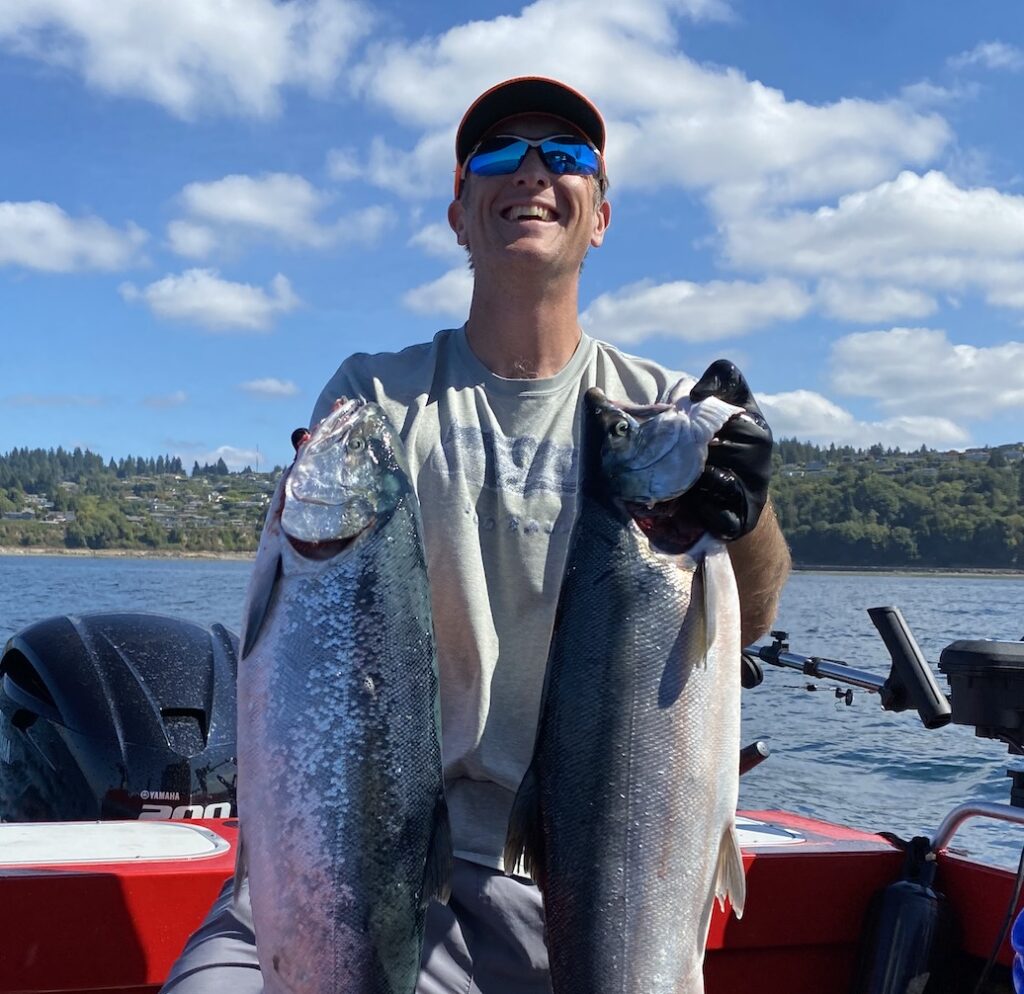
The best thing about fishing Marine Area 10 for coho salmon is that you combine fishing for salmon extremely close to home with a typical abundance of coho and simplicity of technique that you might as well just say you’re going catching!
Latest news / posts about Marine Area 10 Fishing
- How to Prepare for the 2025 Puget Sound Spot Shrimp Season
- Pink Salmon Run 2025
- 2025 Chinook Salmon Forecast for Puget Sound
- 2025 Puget Sound Pink Forecast
- 2025 Coho Salmon Forecast for Puget Sound
Updated Creel Report for Marine Area 10 – Seattle / Bremerton Coho Salmon Fishing
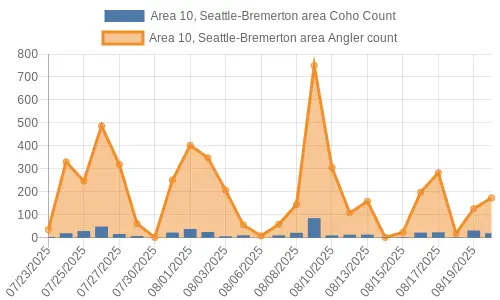
As the season opens up and catches start being reported, you will see the accurate data reflected in this graph, but it will be empty if the season hasn’t started yet.
When to fish for Coho Salmon in Marine Area 10 – Seattle / Bremerton
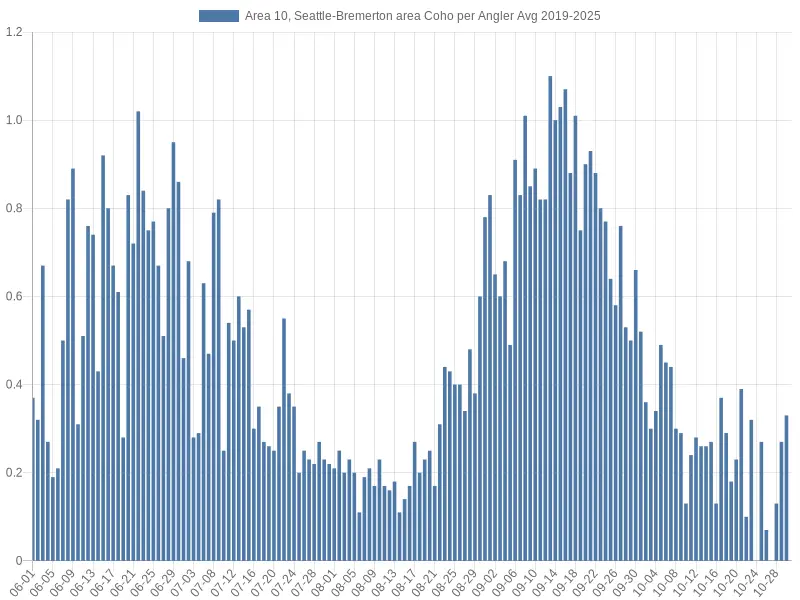
The season usually gets going in June for out-migrating / resident coho and the returning summer/fall coho usually starts to show in July and continues through September.
But don’t take my word for it, have a look at the graph above that tells you exactly when to fish for Marine Area 10 Coho!
As you can see there are two distinct periods where coho salmon are caught in Marine Area 10 – Seattle / Bremerton…
It’s also potentially a reflection of when the chinook season opens in Marine Area 10 and the effort diverting there.
Permanent Fishing Regulations for Marine Area 10 – Seattle / Bremerton
Please refer to the permanent regulations for Marine Area 10 as maintained by WDFW here.
Need more help understanding saltwater salmon regulations? Consult our guide to understanding saltwater salmon regulations in Washington here.
Emergency Regulations for Marine Area 10 – Seattle / Bremerton
Please refer to WDFW’s emergency rules page for a full list that are in effect.
How and Where to fish for Coho Salmon in Marine Area 10 – Seattle / Bremerton
As always, it’s best to refer to our page on Puget Sound Salmon Fishing for all of the species-specific how-to’s. Below is a video that may be useful as well:
There are many techniques to successfully target coho, but in general, Coho salmon like your trolling speed to be faster than other species like Chinook.
Also, the resident coho tend to prefer smaller offerings such as red label herring or 2.0 spoons.
How-to catch resident coho in Marine Area 10
Without a doubt, downrigger trolling gives you the best chance here as you can really cover some water fast.
This fishery is all about finding the school and staying on them for repeated hookups.
You can get these fish on deep-six divers as well, as they are not that deep. Especially if you get out on the water early in low light.
As the sun comes up these fish will tend to be deeper. We did most of our damage on 45 – 55 ft of wire on the downrigger.
Also, earlier in the season these fish are sometimes much deeper towards the krill line.
Another technique thing is you want to go fast! Not only does this help you cover water faster (to find the schools), but going fast will keep the shakers off of your gear and coho tends to bite a little better at 3mph+.
If you are going with a strong tidal current you may be trolling at 4-5 mph.
Troll with the current for best results and covering water.
You will undoubtedly find the All Star Charters boat(s) out on the water if you spend any time on MA10. Look at how fast they are moving.
And they usually have to catch 8-10 fish to limit and go home.
Once you find the school, you need to troll in whatever direction keeps you on the same spot you hooked that first fish.
This is one of the primary reasons why I use the troll tracking feature of Navionics.
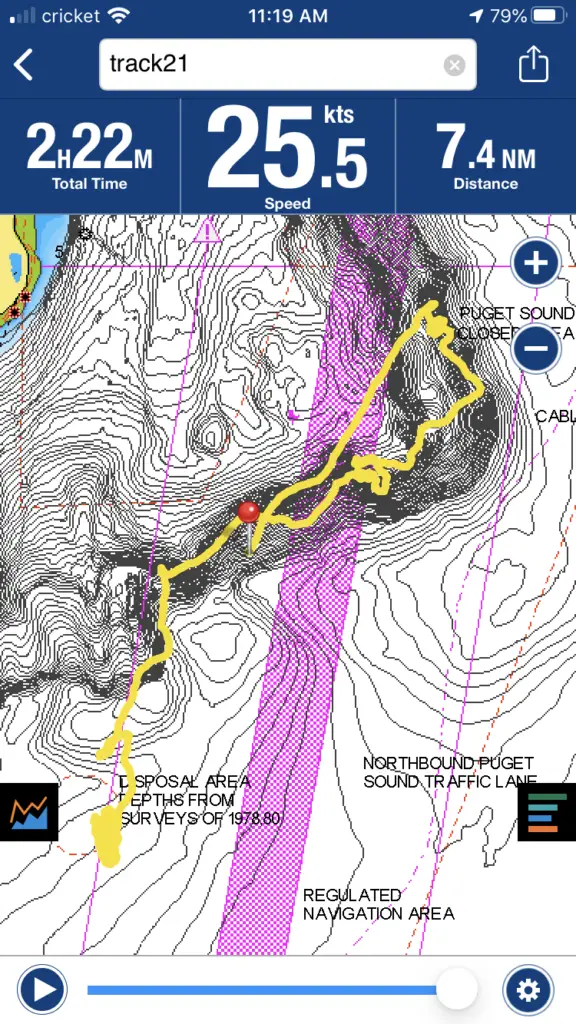
As you can see from the above saved track around Jeff Head, that dense yellow is where I encountered coho salmon and did donuts resulting in multiple hook-ups, until I lost the school.
Zig-zag your troll, between 200 ft and 550+ ft of water (or deeper). And even on that path, give your boat some wiggle to ensure that your flashers are being presented cross-current as much as possible to give yourself the best odds of a hookup.
Don’t just troll behind others when in traffic, hit areas nobody is traveling through. Watch other boats like a hawk. Look at what nets are moving. This is all about finding the school.
If you see someone hook up, make a beeline for the spot they vacated.
For our last fish, we got bit on one rod, and it didn’t stick, so we quickly lost it.
We made a circle and got right back on the spot. We got bit again and lost that fish! (I threw away the hook after the trip).
Then I saw another boat hook up in the same vicinity and just kept motoring along, so we made a direct beeline for where they were.
Literally as soon as we got into that area, the rod went off again and this time we landed it to finish the day off.
How to target returning fall Coho in Marine Area 10
All of the above applies to returning fall coho as well in terms of boat control strategy, trolling faster, starting shallower in the morning, and going deeper as sunlight increases…
There are a few important differences:
Location, location, location. Coho Salmon returning from the ocean don’t follow structure lines the way chinook do, or at least not the near-shore structure lines. So they don’t know when to turn north or south!
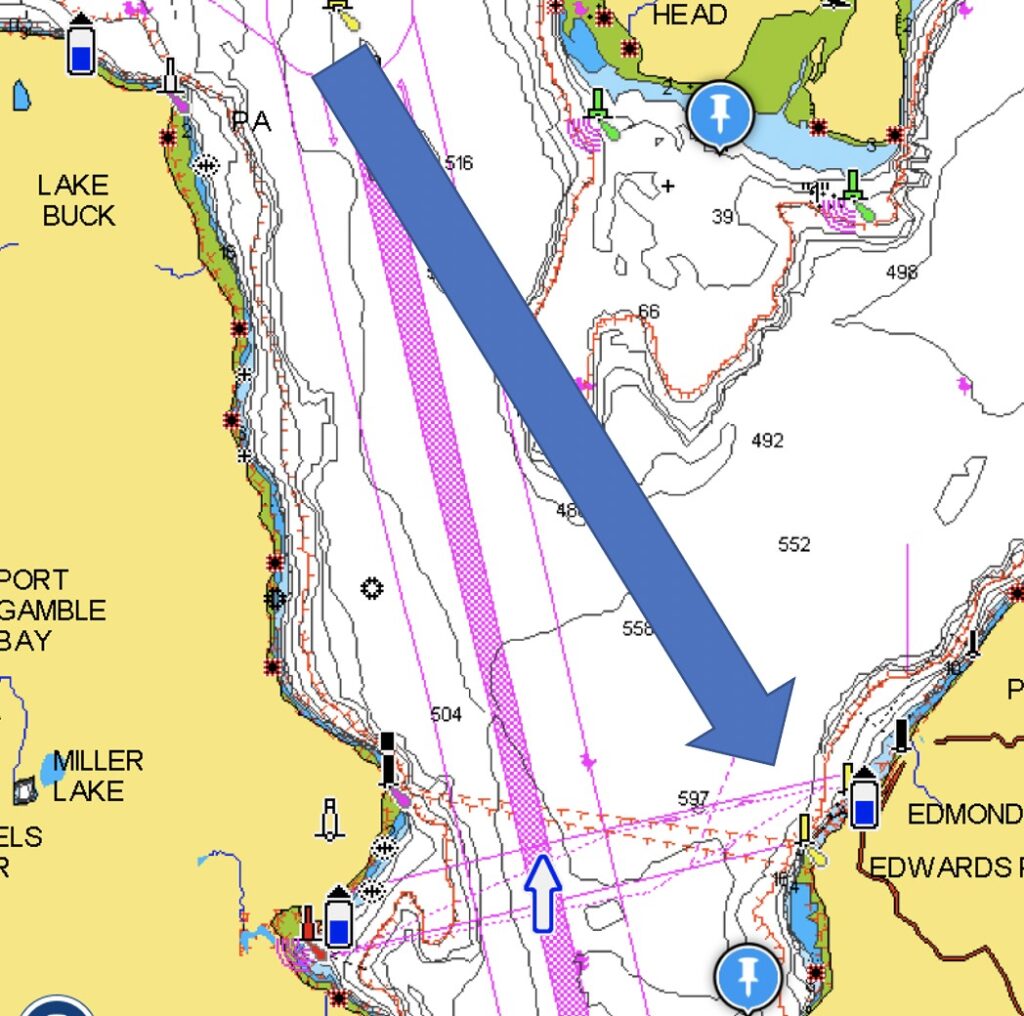
Notice where that arrow terminates…Basically the oil docks at the north end of Marine Area 10.
If you ever fish for coho salmon around the oil docks in late August, you will see 100+ boats in this area…it’s not because coho salmon like the oil either.
It’s this migration dynamic coming from Admiralty Inlet and staying out in deeper water.
Almost all Coho Salmon returning to the Puget Sound rivers will crash into the beach around the Oil docks area and then turn north or south based on which part of the Puget Sound they are headed for.
Depending on the year, the north or south sound coho runs can be challenging, and if you’re concentrating your fishing effort in those areas, you will have a tougher time.
When it comes to returning coho, the oil docks is a money location.
Best gear / rigs for catching Marine Area 10 coho salmon
You will see all kinds of gear being posted as providing success for anglers going after these coho. I’ve seen red-label herring trolled in a hood. White ace high flies/hoochies with herring strips. But my favorite setup is this:
During the late summer for ocean returning coho, I use the same thing, but just swap the 2.0 for the 3.0 version of the spoon and it is just money.